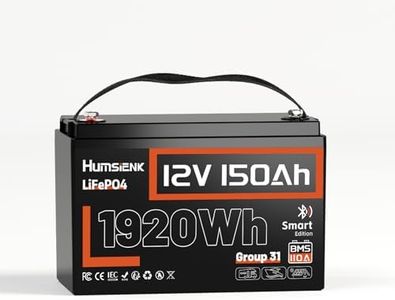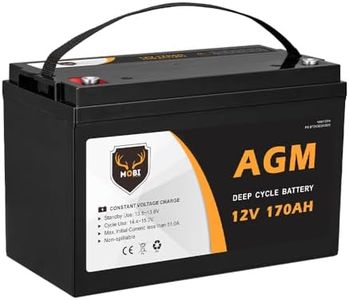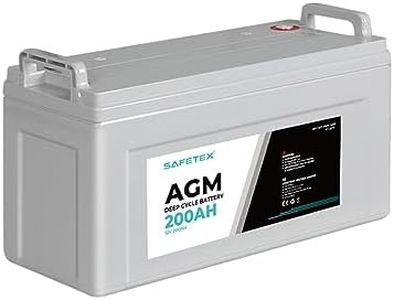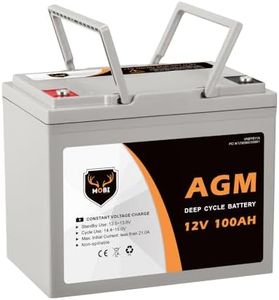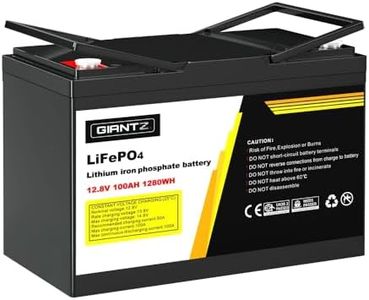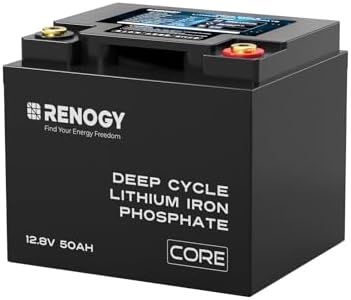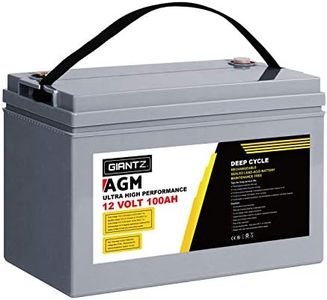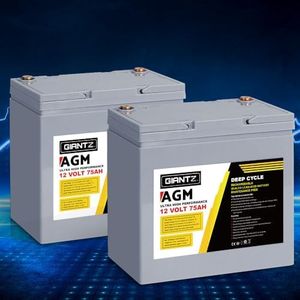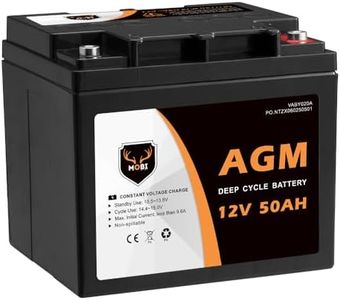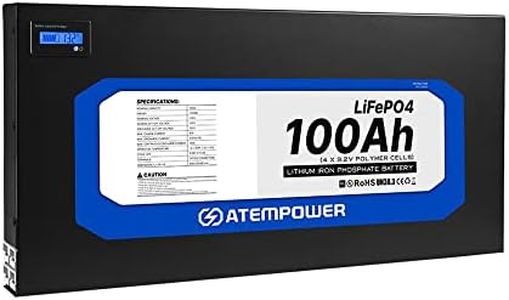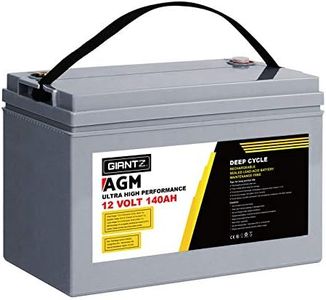We Use CookiesWe use cookies to enhance the security, performance,
functionality and for analytical and promotional activities. By continuing to browse this site you
are agreeing to our privacy policy
10 Best Marine Deep Cycle Batteries
From leading brands and best sellers available on the web.Buying Guide for the Best Marine Deep Cycle Batteries
Choosing the right marine deep-cycle battery is crucial for anyone relying on their boat’s electrical systems for extended periods. These batteries are designed to provide steady power over a long timeframe and can be discharged and recharged many times without damage. Before picking a battery, it's important to consider how you’ll use your boat—whether it’s casual fishing trips, long days on the water, or powering heavy accessories. Matching your battery to your needs helps ensure reliability, longevity, and a hassle-free experience when you’re out on the water.Battery Type (Flooded, AGM, Gel)The battery type refers to how the battery is constructed and maintained. Flooded lead-acid batteries are common and economical, but require periodic maintenance like topping up with water and careful handling to avoid spills. AGM (Absorbed Glass Mat) and Gel batteries are both spill-proof and maintenance-free, making them safer and easier for regular boaters, though they typically cost more. If you don’t want to worry about maintenance and need durability in rough conditions, AGM or Gel are often preferred; if you’re comfortable monitoring water levels and want a lower up-front cost, flooded options work fine.
Capacity (Amp-Hours, Ah)Capacity, measured in amp-hours (Ah), tells you how much energy the battery can store and deliver over time. The higher the amp-hour rating, the longer the battery can supply power before needing a recharge. Small boats with minimal gear can get by with lower capacities, while larger boats running accessories like trolling motors, fish finders, or refrigerators require higher capacities. To choose the right value, add up the expected electrical usage during your longest trip and pick a battery that meets or exceeds this need.
Reserve CapacityReserve capacity indicates how many minutes the battery can deliver a specific small current (usually 25 amps) before dropping below a certain voltage. It’s a real-world measure of how long you can run your equipment when there’s no charging available. If you take extended trips or use your boat for overnight outings, a higher reserve capacity gives you peace of mind. For short, day-long trips, a lower reserve might be sufficient.
Cycle LifeCycle life refers to the total number of full charge and discharge cycles a battery can handle before its capacity significantly declines. Deep-cycle batteries are designed so this number is much higher compared to starting batteries. If you use your battery often—especially if you deeply discharge it each time—look for a high cycle life. Occasional users who rarely run batteries down deeply may not need the highest cycle life.
Physical Size and WeightPhysical size and weight matter because your battery must fit in your boat’s battery compartment and be easy to handle for installation or removal. Marine batteries come in different group sizes—a code that represents their dimensions. Check your boat for space limitations and choose a group size the compartment can accommodate. Lighter batteries are easier for one person to move, but more capacity usually means more weight.
Vibration ResistanceBoats, especially smaller or high-speed ones, subject batteries to a lot of bouncing and jostling. Some battery types and designs handle vibrations better than others, reducing the risk of internal damage and extending battery life. If your boating involves choppy waters or rough handling, look for batteries that are specifically built or rated for high vibration tolerance.
